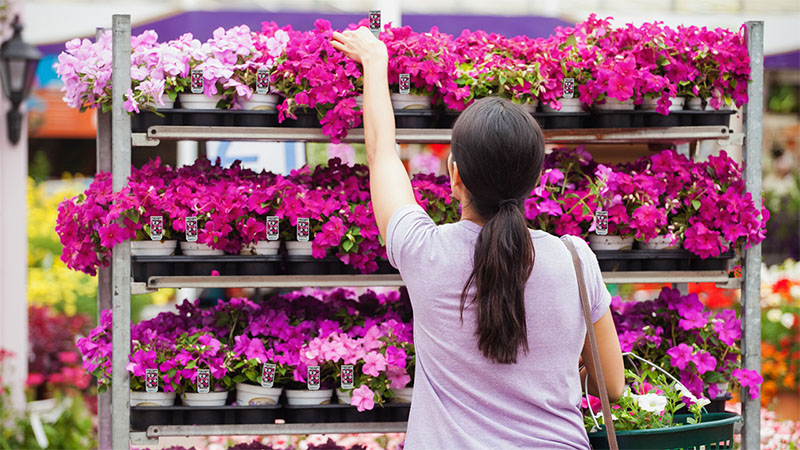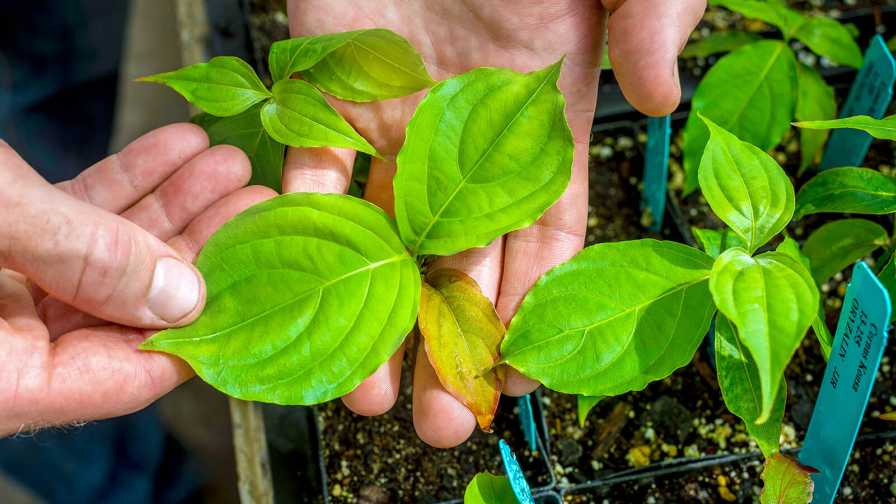Allan Armitage Revisits the Native Plant Movement And Its Evolution

The native perennial Asclepias tuberosa attracts bees and other pollinators..
One of the main movements or trends in plant marketing is the use of American native plants in the landscape, garden, design, and retail trades. I reviewed some of my past columns for Greenhouse Grower, where I had composed a number of opinions on native plants over the years. However, one column I wrote in 2004 stood out. Some things have changed, but then again, some things have not.
Here are a few excerpts from my “Invasive Plants Make Us Look Bad” column in the July 2004 (Vol. 22, No. 8, page 142) issue of Greenhouse Grower, and my thoughts 14 years later.
“It seems every time I read a gardening section in the newspaper, someone is dissing our ornamentals, particularly our perennials. I am a little tired of hearing how exotics sold by the horticulture industry are invasive, and as much as I enjoy our native species, I am tired of hearing how they are the end all and be all. I know, and you know, that 99% of the plants we sell from our nurseries and greenhouses are not invasive, so why are our plants under such attack?”
I still ask that question, but it became obvious over time that the attacks were not really about our plants, but about invasive plants in general.
“Is it important what ignorant garden writers say, anyway? I would like to say ‘No, it isn’t. We have been selling plants for a long time, and we will continue to do so,’ but that is self-serving and foolish. It is important because this is what the majority of gardeners read, and if they read often enough that ornamentals are bad for the environment, well, they will stop buying any plant without Native to America on the label. Over time, through word of mouth, this mindset, like a waterfall, will engulf all who get in the way. If you don’t believe me, all I should have to say is ‘Remember the Alar Scare!’”
Boy, have those words become prophetic. Enough voices cried out, enough people believed, and now there is not a single installation, a single garden center, or a single designer that does not look for a Made in America label. For those of you too young to remember Alar, perhaps that is just as well.
“Where did this outcry against these exotics come from, and what does that have to do with me? For a start, nearly 100% of our annuals and probably well over 70% of our perennials are exotic (i.e., not native). On the woody landscape side, the numbers are also far more skewed to exotics.”
This is no longer the case. With breeders adding dozens of nativars and with public opinion so high, many more perennials, trees, and shrubs are natives/nativars than there were 14 years ago.
“I, for one, revel in this diversity, and as long as our customers are happy with what they purchase, I welcome new exotics and new natives to our fold with open arms. However, there is a problem out there, and we are not without responsibility. The key word is not exotic, but invasive.”
Invasive has become a dirty word, even though exotics were brought over by the pilgrims. There is little we can do about this, but we can control thuggery (read on).
“Thuggery is often a matter of where one lives. What is invasive in one area is not always a problem elsewhere. For example, miscanthus grass is starting to dot the natural areas of the Midwest, but struggles in other areas. Lily-of-the-valley (Convallaria majalis) covers entire acres in the North, but in the Southeast, they are as rare as opals. One man’s thug is another man’s groundcover.”
This is truer today than it was then. People are simply more aware.
“These plants are not bad; they are simply too successful for their own good. For most people, they will quickly overrun a garden or landscape, and instead of planting our material with smiles, people will be yanking it out with a scowl. Their beauty provides the invitation; their bad manners result in an invasion. For gardeners like my daughter Laura, who does not have the time to be pick-axing these out in a few years, they turn her off to gardening, and we end up losing a customer.”
We saw the problem of too little time and too little patience at least 14 years ago. With smartphones, it is even truer in 2018. Today, more than ever, we cannot underestimate the need for success.
“For landscapers, I have less patience. It is their job, as it is ours, to know the plants they are using. If they are professionals, they will know not to use them. If they are in the business solely because they own a red pick-up truck and a tiller, there is little hope of educating them.”
I did not mean to pick on landscapers. I have the same impatience with retailers and nursery people. Selling English ivy, Chinese wisteria, or Asian chameleon plant (Houttuynia) should be a capital offense.
“The problem is, we are still selling plants that are invasive. They may not take over entire pastures, woods, or waterways, but they may take over people’s gardens and landscapes, and that is a no-no. Plants like gooseneck loosestrife, chameleon plant, and buttercups (Ranunculus) can ruin a landscape in a few years, and as far as the common folk are concerned, they are as bad as kudzu, multiflora rose, and lythrum. That they are lumped in with these pernicious well-known thugs is already showing up in newspaper articles and garden publications. The answer: Know the thugs in your area, and phase them out.”
Can you believe I wrote that 14 years ago, and I am still writing it today? There is no doubt we are far more aware of invasiveness and thuggery today than ever before. However, we are slow learners. We simply can no longer afford stupidity. Unfortunately, we all tend to get tarred with the same brush.
Ah, but enough of this negativity. It is springtime and plant lust is all around. Each year gets better, and each year we get smarter. Enjoy the season!









